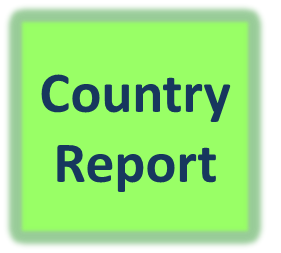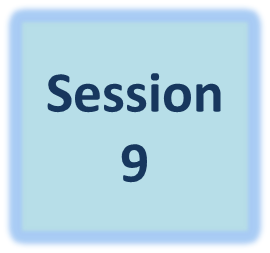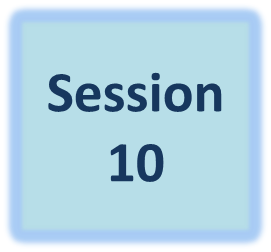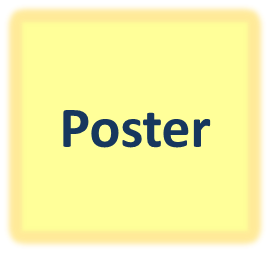| No. |
Title |
Presenter |
Download |
| P01 | JPSS data products calibration/validation updates | Xingpin Liu, NOAA/NESDIS/STAR |   |
| P02 | Post-GPM rain retrieval and 3-D wind retrieval: the DYCECT mission | Nicolas Viltard, LATMOS-IPSL, CNRS-UVSQ-UPMC |  |
| P03 | Status of the GeoKompsat-2A AMI rainfall potential algorithm | Sukbum Hong, Yonsei University |   |
| P04 | The Cyclone Global Navigation Satellite System (CYGNSS) - Mission Overview and Wind Product Assessment | Zorana Jelenak, NOAA/NESDIS/STAR-UCAR |  |
| P05 | GOES-R Proving Ground Activities at CIRA | Renate Brummer, CSU/CIRA |   |
| P06 | Using Himawari-8 to Prepare Algorithms for GOES-R | Ruiyue Chen, NOAA/NESDIS/STAR |  |
| P07 | Diurnal and seasonal variations of inter-calibration for COMS Infrared channels | Minju Gu, KMA/NMSC |  |
| P08 | Visible channel calibration of JMA's geostationary satellites using the Moon images | Masaya Takahashi, JMA/MSC |   |
| P09 | An Introduction to Himawari-8 Cloud Products | Ryo Yoshida, JMA/MSC |   |
| P11 | Atmospheric Motion Vectors derived from Himawari-8 | Kazuki Shimoji, JMA/MSC |   |
| P12 | Research to Operations: The STAR Enterprise Winds Algorithm on Himawari-8 for Algorithm Continuity in Operations | Shanna Sampson, NOAA/NESDIS/STAR |  |
| P13 | Use of upper-tropospheric Atmospheric Motion Vectors (AMV) for diagnosing tropical cyclone intensity | Ryo Oyama, JMA/MRI |   |
| P14 | Current and Future Korean Geostationary Satellite AMV Quality Control Method | Hyungmin Park, Pusan National University |  |
| P15 | Analysis of atmospheric motion vector tracking process | Yurim Oh, Pusan National University |  |
| P16 | Study of sulfur dioxide detection over East-Asian. | Hyun Jin Lee, Pusan National University |  |
| P17 | Frequency change of Asian dust events depending on surface conditions | Jae-Hyun Ryu, KMA/NMSC |  |
| P18 | Aerosol monitoring over South Korea using COMS MI measurement for MAPS 2015 and DRAGON-Asia 2012 | Mijin Kim, Yonsei University |  |
| P19 | AERUS-GEO: A new aerosol product based on MSG geostationary satellite observations | Dominique Carrer, Météo France |  |
| P20 | Aerosol Optical Depth Retrieval over the snow from GOCI in winter season. | Hyunkwang Lim, Yonsei University |   |
| P21 | GOSAT thermal infrared data for meteorological use towards GOSAT-2 | Kei Shiomi, JAXA |   |
| P22 | Creating a high spatial resolution CO2 sensitive 13.3 μm channel for AVHRR and VIIRS | Wolfgang Paul Menzel, SSEC, University of Wisconsin |   |
| P23 | Correction of cloud effect in total column ozone measurement from PANDORA by using Kalman Filter | Kanghyun Baek, Pusan National University |  |
| P24 | A New Technique for Nighttime Sea Fog Detection from Satellite of Applying Unsupervised Learning. | Daegeun Shin, Pusan National University |  |
| P25 | Development of fog detection technique using COMS and GIS information in the Korean Peninsula | Seung-Ju Lee, Kongju National University |  |
| P26 | The applications of FENGYUN satellite data in Marine Meteorology | Xiang Fang , CMA/NSMC |  |
| P27 | VALIDATING CI2 AND DU2 MONSOON INDICES FOR THE PHILIPPINES USING RAINFALL AND WIND DATA | Loren Joy Estrebillo, University of the Philippines |   |
| P28 | Study of Tropopause Folding Turbulence Detection(TFTD) Algorithm for the future Korean geostationary satellite | Mijeong Kim, Pusan National University |  |
| P29 | Inferring cumulus updraft strength using geostationary satellite rapid-scan measurements | Atsushi Hamada, The University of Tokyo |  |
| P30 | Machine learning approaches to detect convective initiation using geostationary satellites and weather radar | Sanggyun Lee, Ulsan National Institute of Science and Technology |  |
| P31 | A Quick Evaluation of GPM/DPR Reflectivity over Korea | Ki-Hong Park, KMA/NMSC |  |
| P32 | Rain retrieval using the SAPHIR water vapor sounder on Megha-Tropiques | Audrey Martini, LATMOS-IPSL, UVSQ-UPMC |  |
| P33 | Effect of AMSU-A observation and adjusted AMSU-A observation error covariance on numerical weather predictions | Sung-Min Kim, Yonsei University |   |
| P34 | Optimal Assimilation of Hyperspectral IR and MW Soundings for Regional Numerical Weather Prediction | Chian-Yi Liu, NCU/CSRSR, Taiwan |  |
| P37 | Preliminary assessment of socio-economic benefits from CMA Meteorological Satellite Programmes | Jiashen Zhang, CMA/NSMC |  |
| P38 | Using satellite data for hydrometeorology and environmental monitoring in the Far Eastern Region of Russia | Iurii S. Chetyrin, FEC SRC «Planeta» |   |
| P39 | Fire monitoring from Himawari-8 | Adam Lewis, Geoscience Australia |  |













